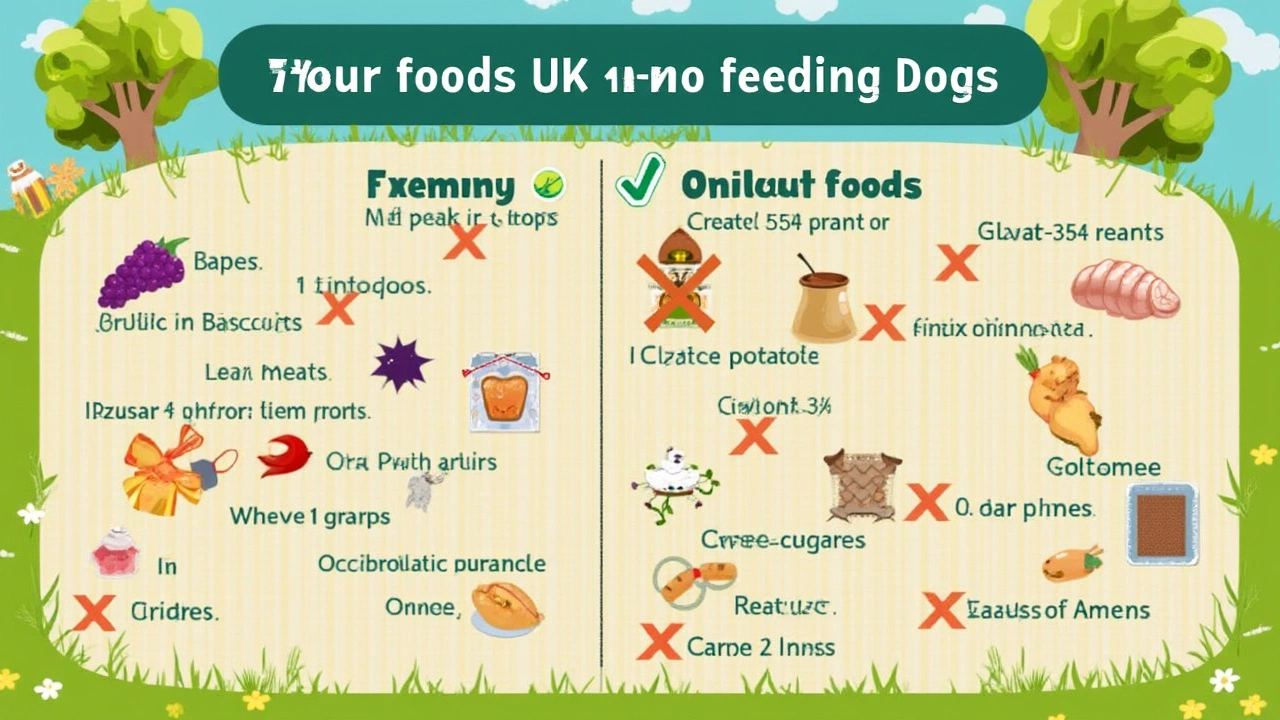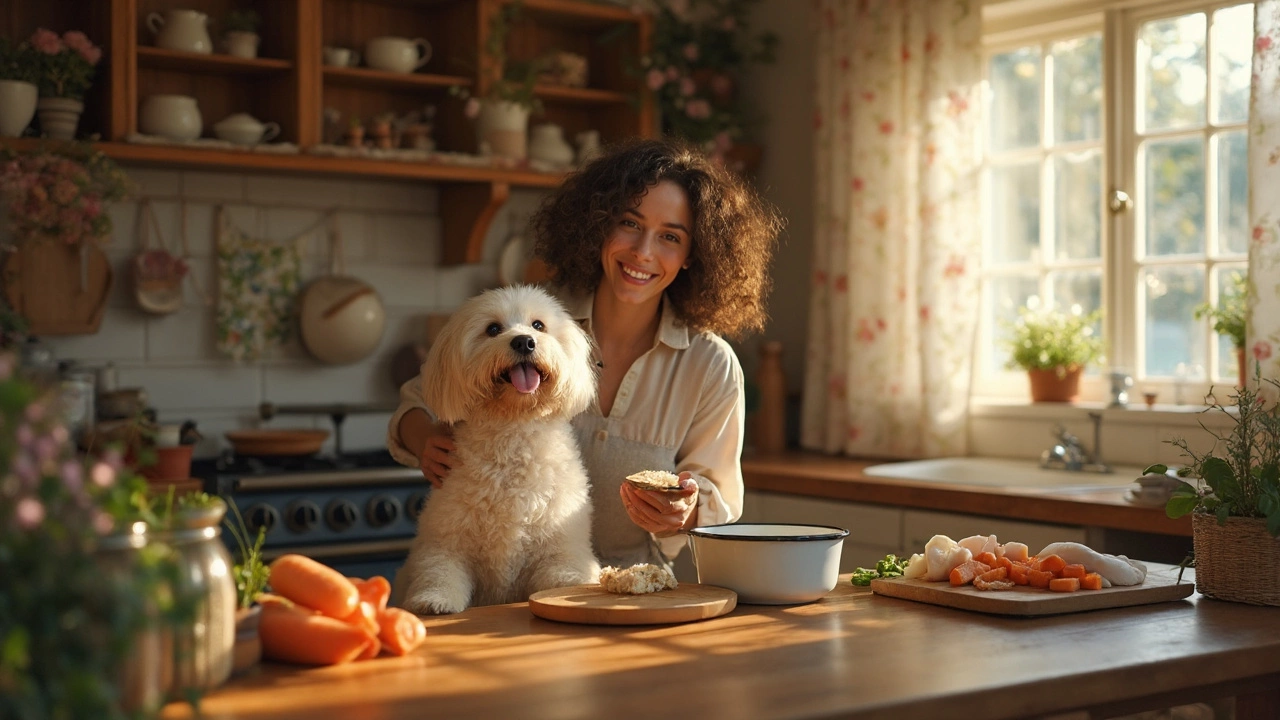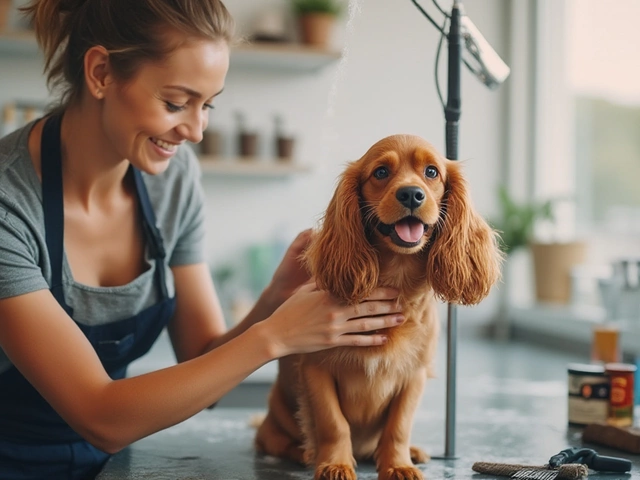Making homemade dog food can be a rewarding experience, but it’s not as simple as you might think. Our canine friends can't always digest what we can, and certain ingredients can be downright dangerous. Let’s take chocolate, for instance. While this sweet treat is a human favorite, it’s toxic to dogs. Chocolate contains theobromine, which dogs can’t break down as quickly as we can.
Another more surprising ingredient to avoid? Grapes and raisins. Even small amounts can cause kidney failure in dogs, and it's not entirely clear why. This makes them a no-go for any homemade recipe.
- Common Harmful Ingredients
- Surprising Foods to Avoid
- Safe Replacements for Dogs
- Planning a Balanced Diet
Common Harmful Ingredients
When whipping up a batch of homemade food for your pooch, it’s crucial to keep in mind ingredients that, while harmless to humans, can be quite dangerous for dogs. Avoiding these ingredients will help ensure your dog's health and happiness.
Chocolate
This one often surprises pet owners. Chocolate contains theobromine, which is toxic to dogs. Even a tiny piece of dark chocolate can lead to vomiting, diarrhea, or worse, more severe issues like heart problems and seizures.
Grapes and Raisins
Small but mighty harmful, grapes and raisins can cause acute kidney injury in dogs. If your dog gets into these, it might seem fine at first but can develop symptoms such as vomiting and sluggishness within a day.
Onions and Garlic
These add flavor to our meals but are a big no-no for dogs. They can damage a dog's red blood cells, possibly leading to anemia. Cooked, raw, or in powder form, it's best to steer clear of these ingredients.
Nuts
Macadamia nuts, in particular, can be highly toxic, causing weakness, vomiting, and even neurological symptoms. While some nuts are less harmful, they still aren’t recommended due to choking hazards and their high-fat content.
Yeast Dough
If you're a baker, be cautious. Raw yeast dough can expand in a dog’s stomach, causing bloating and discomfort. In severe cases, it can lead to a life-threatening condition like gastric torsion.
| Ingredient | Potential Risk |
|---|---|
| Chocolate | Heart problems, seizures |
| Grapes/Raisins | Kidney failure |
| Onions/Garlic | Anemia |
| Macadamia Nuts | Neurological symptoms |
| Yeast Dough | Gastric torsion |
Surprising Foods to Avoid
When it comes to your dog's diet, some foods may seem harmless but are actually unsafe. Knowing which homemade ingredients pose a risk can help you avoid them and keep your pet healthy. Let’s look at some surprising offenders.
Avocados
You might think avocados are a healthy option because of their good fats, but they contain persin, which can be toxic to dogs when consumed in large quantities. This substance can cause vomiting or diarrhea.
Nuts
Macadamia nuts are particularly dangerous. Even a small amount of macadamia nuts can cause weakness, vomiting, and other symptoms in dogs. As for other nuts, they can be high in fat and may lead to pancreatitis.
Onions and Garlic
These might add flavor to our meals, but they're a bad idea for dogs. Consuming onions or garlic can damage a dog's red blood cells, potentially leading to anemia. It doesn't matter if they're raw, cooked, or powdered, they should be kept out of the bowl.
Tomato Leaves and Stems
While ripe tomatoes are generally safe for dogs, the green parts can cause digestive issues. The leaves and stems contain solanine, which can lead to stomach upset and other complications.
By steering clear of these dog health hazards, you’re already on a better path to creating safe and nutritious meals for your furry friend. Remember, it's always best to consult with a vet if you're unsure about anything in your dog's diet.

Safe Replacements for Dogs
When it comes to making homemade dog food, choosing the right ingredients isn't just healthier—it can save you a trip to the vet. Let's dig into safe alternatives for your pup.
Meat Choices
Dogs love meat, and luckily, most lean meats are great for their diet. Choose meats like chicken, turkey, and beef. Make sure they’re cooked thoroughly and all bones are removed to avoid any choking hazards. Organ meats like liver and kidney are also nutrient-rich options.
Vegetables They’ll Love
Some vegetables are great additions to dog food. Carrots, green beans, and sweet potatoes provide essential vitamins and minerals. They can be served cooked or raw, depending on your dog's preference, but always in manageable, bite-sized pieces.
Grains and Carbs
Though not necessary for all dogs, whole grains are a good carb option. Brown rice, oats, and quinoa can provide energy and fiber. Make sure they’re fully cooked to ensure easy digestion.
Fruits for Treats
Fruits can be a special treat. Apples (minus the core and seeds) and blueberries are safe options, offering a touch of sweetness without risk.
- Always remove seeds and pits as they can be toxic.
- Serve them in small amounts due to high natural sugar content.
Essential Fatty Acids
Adding a bit of fish oil or flaxseed oil can improve your dog’s coat and skin health. These oils are rich in omega-3 fatty acids, essential for overall well-being.
Remember, variety is key. Providing a range of safe, wholesome ingredients can keep your dog healthy and excited about mealtime.
Planning a Balanced Diet
Creating a balanced diet for your furry buddy can sometimes feel like solving a complex puzzle. It's essential to get the ratio of proteins, carbohydrates, and fats just right.
Understanding Dog Nutritional Needs
To start with, your dog needs a good amount of protein. It’s the building block for muscles and organ tissues. Think chicken, beef, or fish, but it's got to be cooked and free from bones. Don't want any choking hazards, right?
Next, carbohydrates provide the needed energy. Brown rice, oatmeal, or sweet potatoes are great choices. These can keep your dog bouncing with energy throughout the day.
Balancing Fats and Vitamins
Fats are the main source of essential fatty acids for your canine companion. These are crucial for maintaining a healthy coat and skin. Consider adding a little omega-3 rich fish oil to your homemade dog food.
And let's not forget about vitamins and minerals! A pinch of green leafy veggies such as spinach or kale can do wonders. These are loaded with vitamins and minerals that contribute to overall well-being.
A Sample Meal Plan
Here’s a quick prototype of what their meal could look like:
- Protein Source: 50% - 60%
- Carbs: 20% - 30%
- Vegetables: 10% - 20%
- Fat: A small amount, adjusted from meal to meal
Consulting the Experts
Before making any diet swaps or long-term changes, it’s wise to consult your vet. They can tailor meal plans based on your dog’s breed, age, and health needs, making sure everything fits perfectly.
Here’s a little nugget: Studies have shown that dogs on specially designed, balanced diets live longer and healthier lives. Isn’t that the goal at the end of the day?







